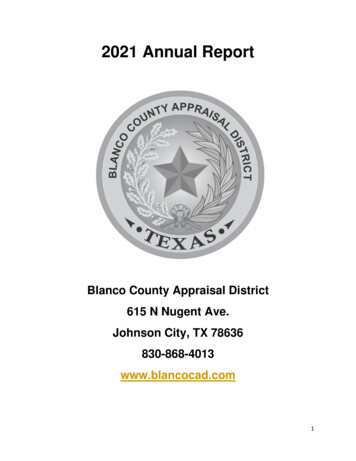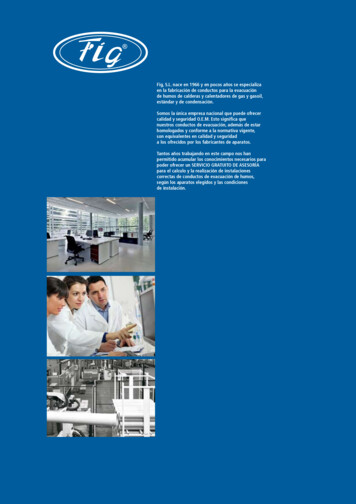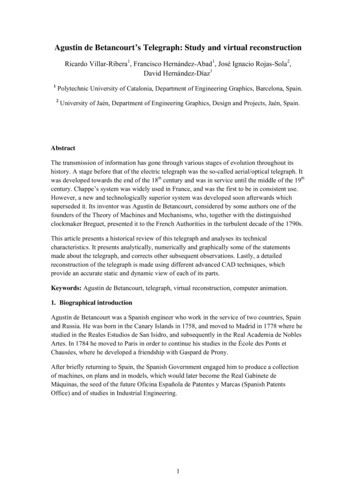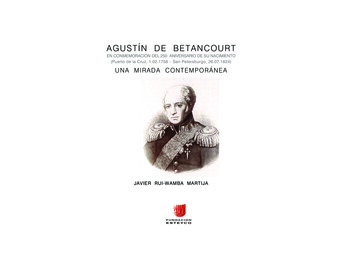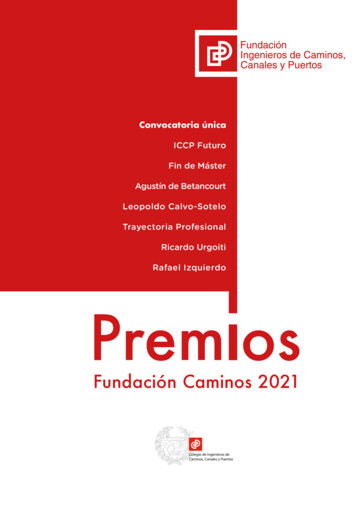
Transcription
Richard Blanco and Carlos BetancourtRevisit Miami's Artistic RootsNeil Vazquez March 21, 2016Richard Blanco and Carlos Betancourt at Books & Books Coral Gables.In the late '80s and early '90s, before the tourists arrived en masse, SouthBeach was a forgotten haven for artists, writers, and washed-up localcharacters. Poet Richard Blanco and artist Carlos Betancourt were two youngCuban-American gay men who met in that creative bustle. Their decades-longfriendship and professional collaboration merged Sunday afternoon at Books& Books for a special reading and signing of Betancourt's latest book,Imperfect Utopia. A retrospective of the local artist's vast oeuvre, the bookalso includes a foreword by Blanco and various essays from noted art-world
scholars.The pair met at one of artist John Bailly's notorious underground parties. Atthe time, Blanco was fresh out of engineering school. Betancourt, however,was a fixture on the local scene and a larger-than-life character who lived andbreathed his work."To me, to be an artist is to wake up and be able to do whatever it is youwant," the bespectacled Betancourt explains. "In my original studio onLincoln Road, I paid 280 a month for the space and had to shower with ahose, but I loved it because I was free."
EXPANDCarlos Betancourt signs a copy of Imperfect Utopia.Their relationship grew out of a mutual need: Blanco gained confidence fromBetancourt's strong sense of self, and the aspiring scribe lent his lyrical proseto Betancourt's highly stylized collages, sculptures, and photographs. It's adialogue that continues today.Betancourt's book reveals that both men's works draw from the same
sensibility. The images recalled in Blanco's poems "América" and"Photoshop" form an elaborate web of the same nostalgia-soaked objectsBetancourt employs in his works. The fractured nature of a Cuban-Americanidentity lies at the heart of their collective fascination. Raised by Cuban-exileparents, they draw from similar experiences growing up in a culturaldiaspora. Blanco went on to champion those same ideas at President BarackObama's 2013 inauguration as the first gay Latino immigrant to serve as aninaugural poet.Through their work, both artists try to piece together their fracturedidentities. In Betancourt's 2007 installation "Re-Collections III," the artistdisplayed his extensive collection of pre-1980s Christmas ornaments. Thepieces were emotionally charged artifacts because Betancourt had noChristmas ornaments in his home when he first moved from Cuba to PuertoRico. As he recalls the story, tears well up.
Apart from being a survey into his varied projects throughout the years,Imperfect Utopia is a lament for a Miami lost to overdevelopment. The samemovement of local business owners that turned Lincoln Road from arundown promenade into a thriving hot spot now wince at the current state ofthe pedestrian mall. Lincoln Road, with department stores displacing culturalinstitutions such as ArtCenter, is a sad shadow of its former self."It will never be like it was," Betancourt bemoans. "Back then, there was areal underground scene where people went to clubs and bars to findthemselves, not because they heard about it from Twitter or Instagram andthought it was hip, which is a word I hate."
EXPANDJose Carlos Diaz (left), Carlos Betancourt, and Richard Blanco.Even more shocking, the process that transformed South Beach is playing outat a much quicker pace in Wynwood. The art galleries that only ten years agobegan to pop up in empty warehouses just north of downtown Miami have,for the most part, been priced out by developers in favor of trendy retailshops.
"I love the idea that art can even do that," Blanco says of the transformativeeffect artists had on South Beach and more recently Wynwood and LittleRiver. "But we have to strike a balance with things like rent stabilization thatoffset real-estate development."For several years, both artists have been working on different sides of thesame mountain and slowly chipping away at the big questions that continueto puzzle them: What does it mean to be Cuban-American? How doesmemory form an active part of the immigrant diaspora? And can a singleindividual hold more than one distinct identity? The answers to thosequestions form an integral part of Miami's diverse culture and its people.
Revisit Miami's Artistic Roots Neil Vazquez March 21, 2016 Richard Blanco and Carlos Betancourt at Books & Books Coral Gables. In the late '80s and early '90s, before the tourists arrived en masse, South Beach was a forgotten haven for artists, writers, and washed-up local characters. Poet Richard Blanco and artist Carlos Betancourt were two young
